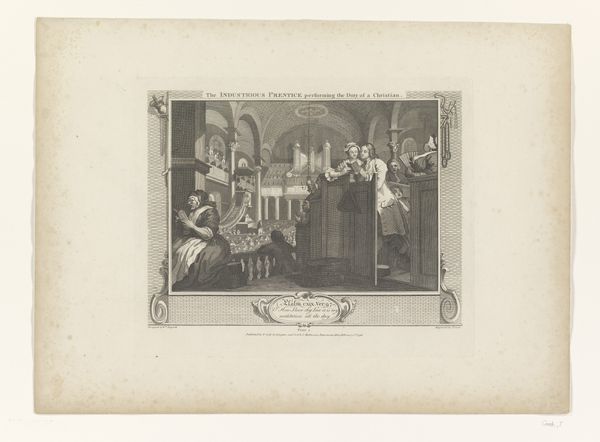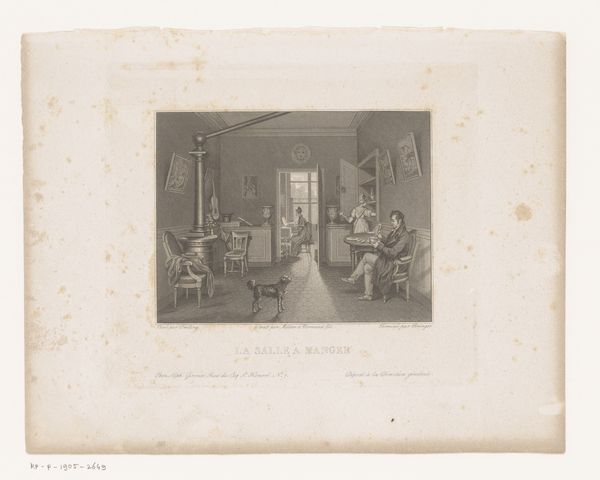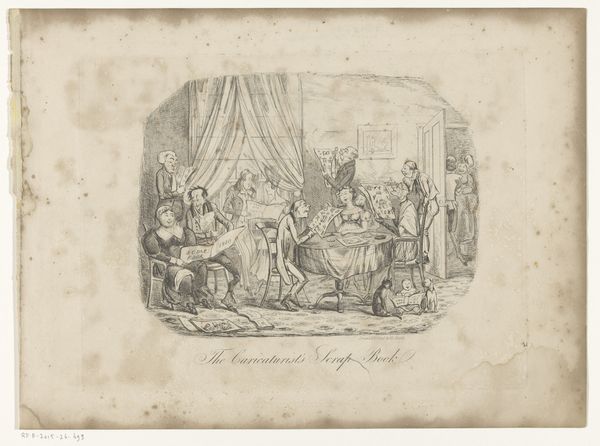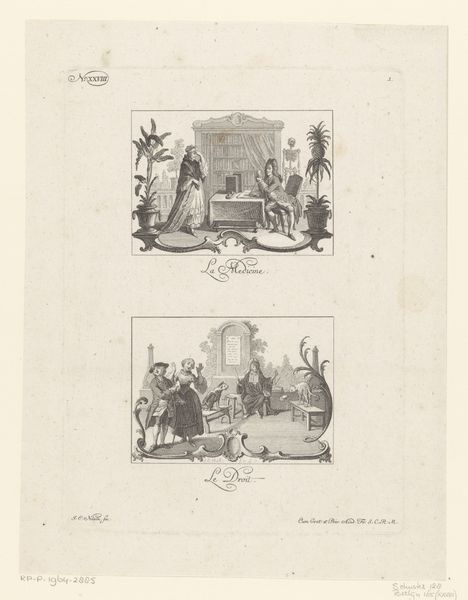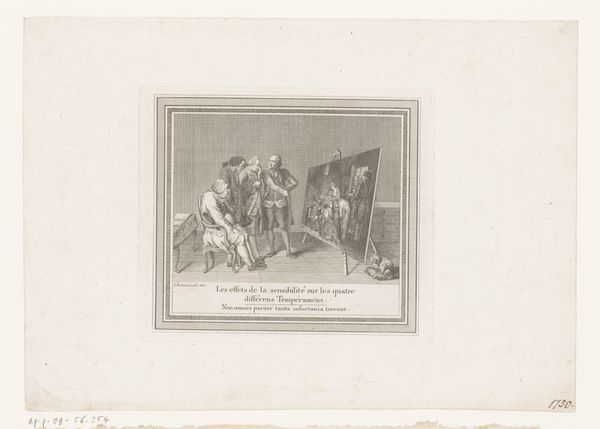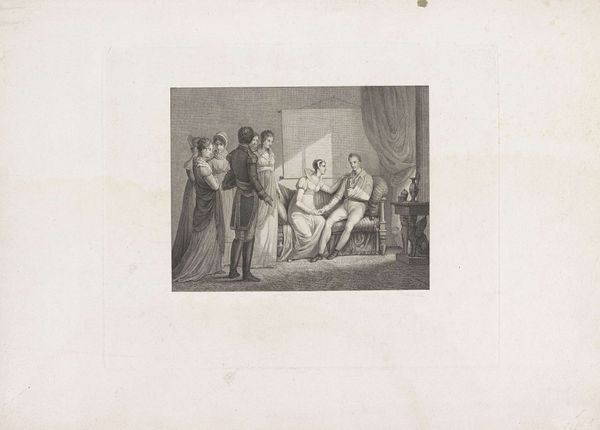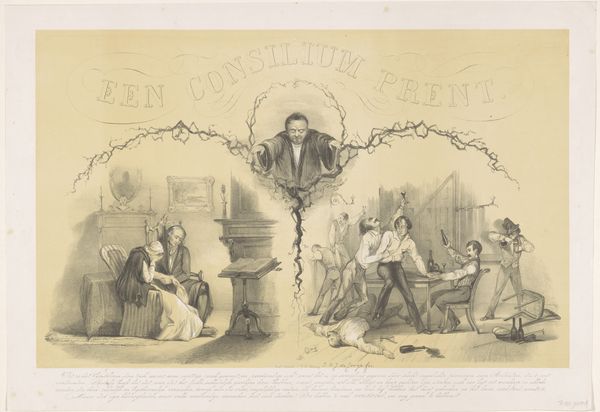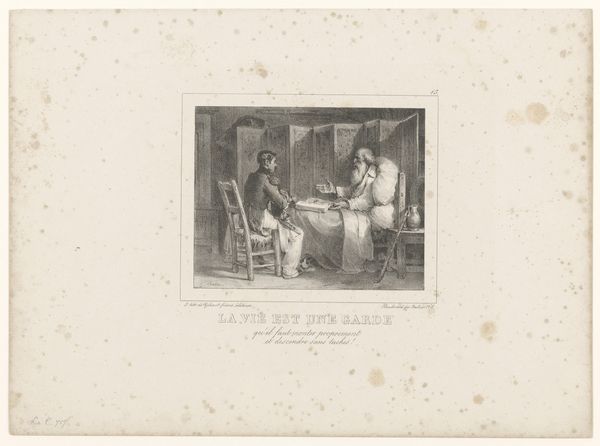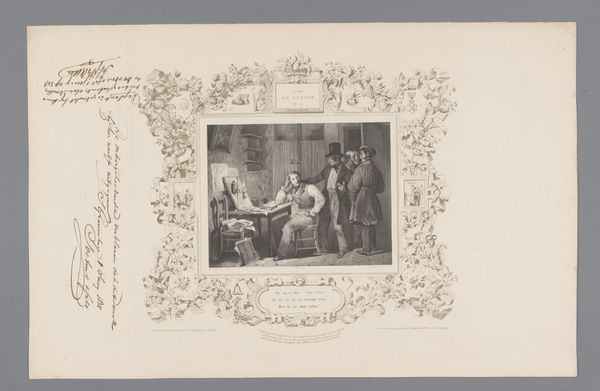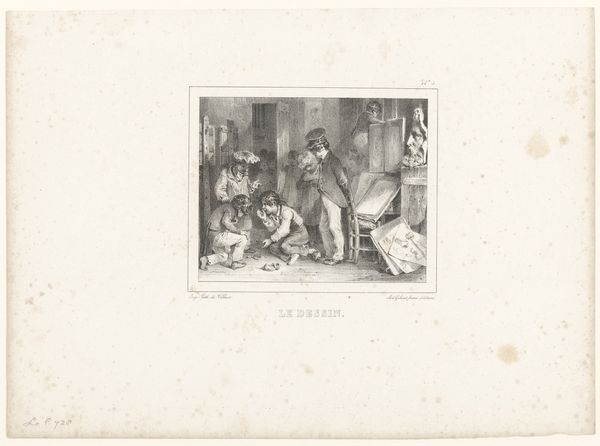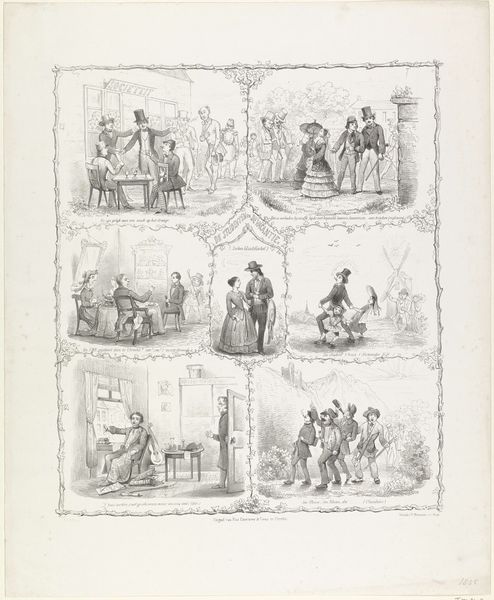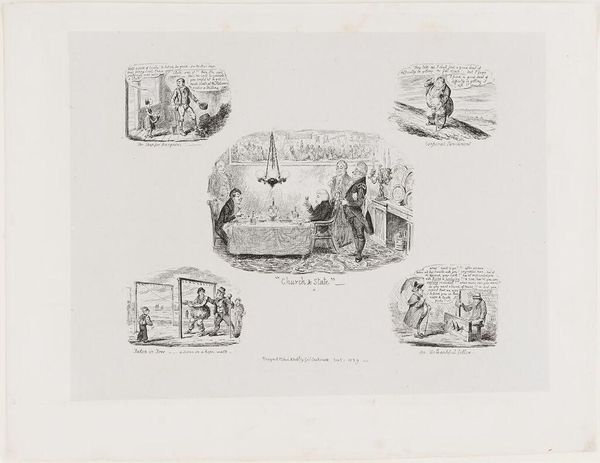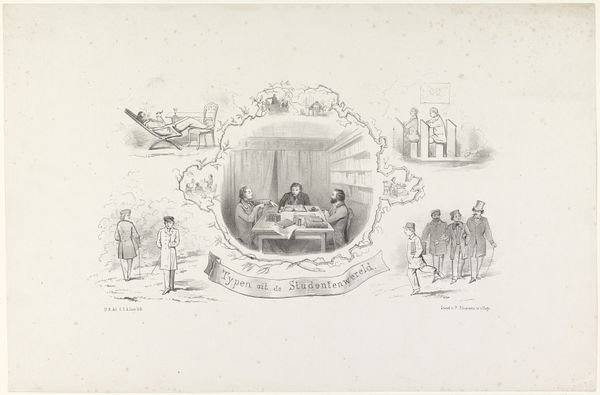
Dimensions: height 473 mm, width 630 mm
Copyright: Rijks Museum: Open Domain
Editor: This is a page from the "Utrechtse Studentenalmanak, 1857" by C.A. Marchant, a print using engraving as its medium. It reminds me of triptychs, or hinged polyptychs from the Middle Ages. What strikes me most is the symmetrical arrangement of scenes that are quite unlike each other. As a formalist, what do you see when you consider the way Marchant constructed this image? Curator: Note how Marchant divides the print into three distinct panels, each framed by a delicate floral border. Each panel presents a vignette: the domestic tranquility of "Poetry in her Home"; a romantic, almost dreamlike central scene that represents "Music"; and then "Prose in her Room." Have you considered the use of light and shadow across the print? Editor: I see it now that you point it out! There is soft light streaming in from the windows in the panels to either side and in the central panel there's this dreamlike bright haze illuminating everything from behind. But I guess I'm not entirely sure what that says about the overall image, since I am missing a thesis statement to tie them all together. Curator: The linear quality achieved by the engraving technique lends itself well to this rather contained vision. What do you make of the placement of the human figure in the work? Editor: I see that figures are prominently centered in each panel, with all other details playing a supporting role. The first features a seated man with his family around him, then a couple surrounded by mythical figures in the middle, then another person dressed as a performer in the final scene. Curator: Precisely. Observe how the artist manipulates light and shadow, how figures inhabit clearly defined spaces, and consider how those formal qualities contribute to our interpretation. Editor: It seems these three scenes have very distinct structural compositions which contrast to one another in order to represent poetry, music, and prose through romantic symbolism and genre paintings. It provides unique artistic perspective of each field in its most concentrated forms. Curator: Indeed. It is this careful orchestration of visual elements, rather than narrative or contextual clues, that directs our reading. By observing form so rigorously, we are invited into its unique sensibility.
Comments
No comments
Be the first to comment and join the conversation on the ultimate creative platform.
